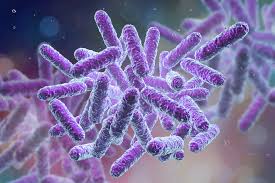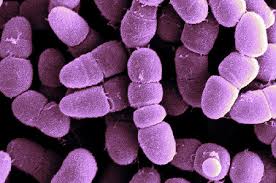Clostridium species are anaerobic, fermentative, spore-forming Gram-positive bacteria belonging to the phylum Firmicutes. Clostridium grows well in stressful environments at body temperature and it produces spores that tolerate extreme conditions. These bacteria produce powerful exotoxins responsible for many diseases, such as tetanus, botulism, and gas gangrene. The clinically important species are Clostridium difficile (C. difficile) and Clostridium perfringens (C. perfringens).

C. difficile can lead to severe complications and currently is the most common cause of diarrhea and colitis, causing about 300,000 to 3,000,000 cases in the United States every year. Antibiotics, such as clindamycin, ampicillin, amoxicillin and cephalosporins, are most frequently associated with C. difficile infection.
The clinical symptoms vary from asymptomatic colonization, mild diarrhea to severe debilitating disease, at the same time, with high fever, severe abdominal pain, paralytic ileus, colonic dilation or even perforation.
The most sensitive and specific test available is a tissue culture assay for the cytotoxicity of toxin B produced by C. difficile. However, this test takes 1-3 days to complete and requires tissue culture facilities. Detection of C. difficile toxin by means of enzyme-linked immunoassay is more rapid and inexpensive.
Education of hospital personnel and infection control issues are of paramount importance in the management of C. difficile infection. Enteric isolation precautions are recommended for patients with the infection, and patients should be moved to a private room if possible. Oral metronidazole or oral vancomycin hydrochloride for 10-14 days are equally effective at resolving clinical symptoms. However, about 15% of patients experience relapse after initial therapy and require retreatment. Pilot studies have shown that vaccination can represent a valuable strategy to prevent C. difficile infection, and therefore, many efforts have been made to develop effective vaccine candidates, such as toxoids or recombinant peptides.
C. perfringens is a common agent in the gastrointestinal tracts of healthy humans and animals. It produces several kinds of toxins. Among these, the alpha, beta, and epsilon toxins are responsible for causing the most severe C. perfringens-related diseases in farm animals.

Symptoms of C. perfringens mainly include watery diarrhea, moderate to severe abdominal cramping and pain. People infected with C. perfringens may experience nausea, but usually, do not have a fever or vomiting. Symptoms usually begin within 8-12 hours, but the incubation period can range from 6-24 hours. Most people recover within 24 hours
Diagnosis of C. perfringens infection is mainly carried out by detecting the bacterial toxin or determining the number of bacteria in a stool sample.
There is no specific treatment for C. perfringens infections. Dehydration can be prevented or treated via oral rehydration or intravenous fluids and electrolyte replacement. The best way to control these diseases is vaccination. However, commercially available vaccines are based on inactivated toxins and have many production drawbacks. Studies have shown that these drawbacks can be overcome through the use of recombinant antigens, and recombinant alpha, beta, and epsilon toxins in Escherichia coli can formulate a trivalent vaccine with high effectiveness.
References: